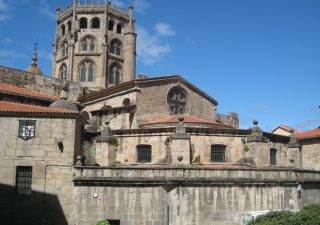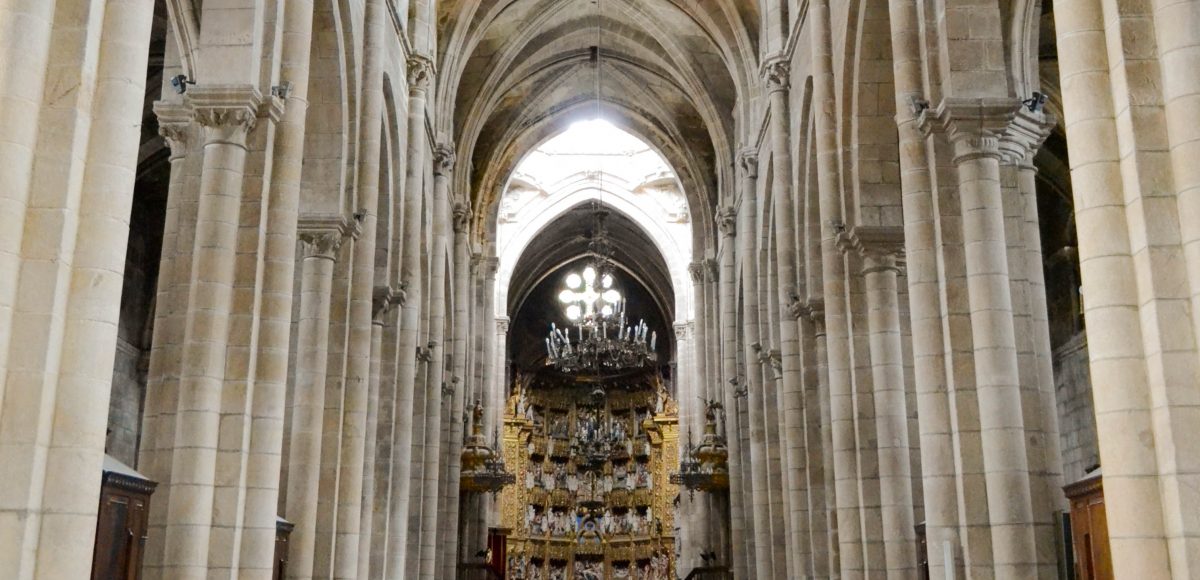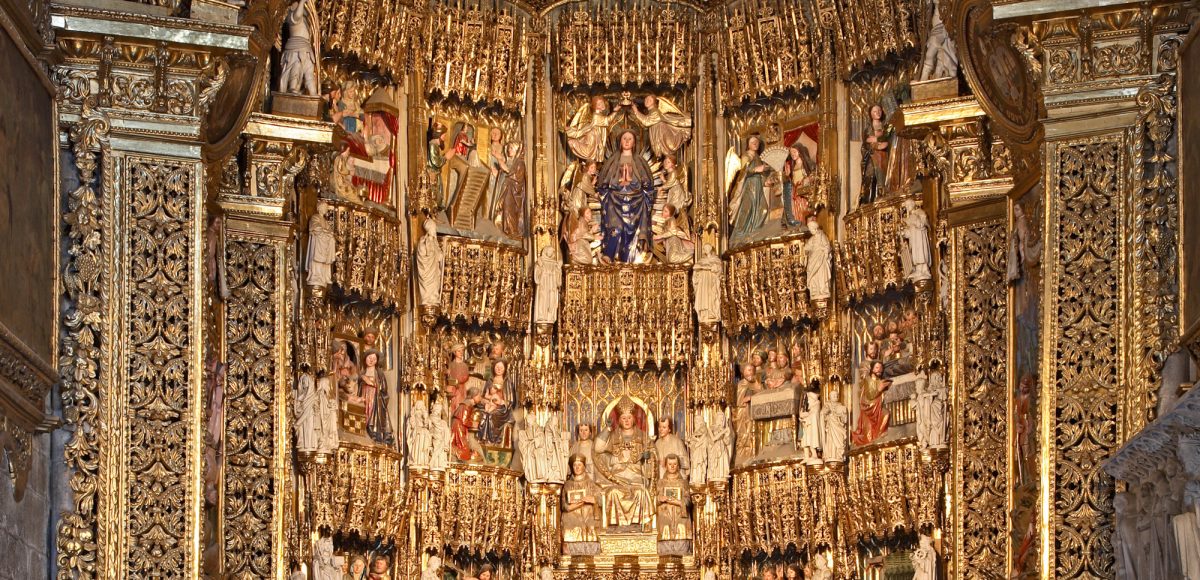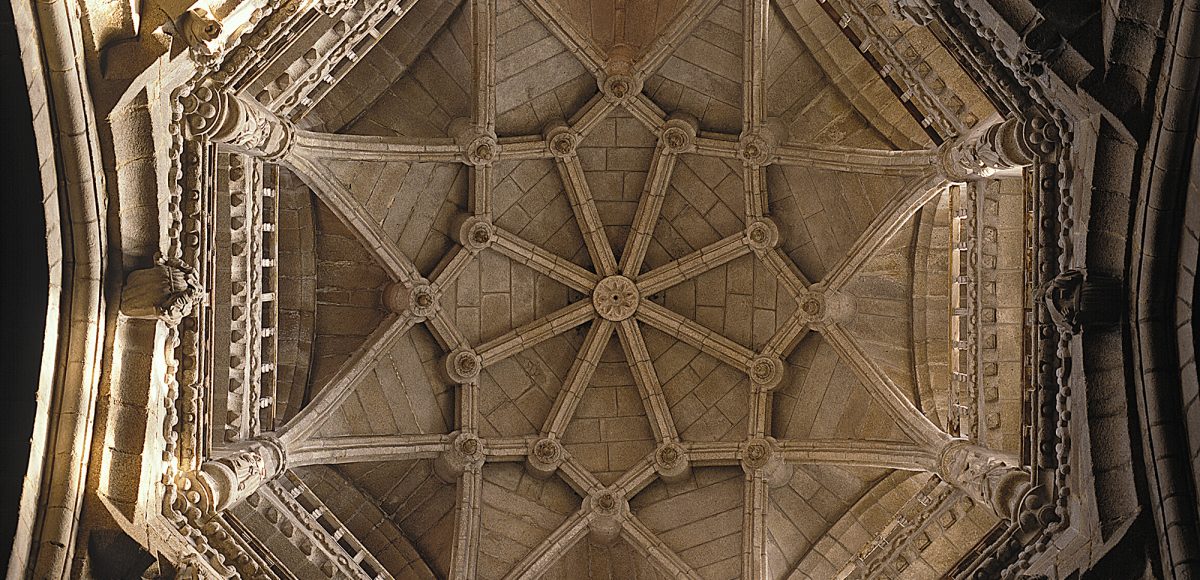
Main Chapel
Inside the Cathedral. Entry through the northern forecourt (on Juan de Austria street),
A beautiful gilded altarpiece stands out in the centre, bathed in light filtered through the Gothic dome.
The apparent harmony of the main altar hides a long history of transformations. The main chapel was relocated to the central nave in the 20th century, taking advantage of the remains of the medieval stone masonry. Nowadays the area is centered by the Gothic altarpiece, built in the the 16th century, which covers the original Romanesque structure.
This altarpice made of wood is a masterpiece of artist Cornelis of Holland. It is divided into four sections and five streets: on the main street and in the most prominent position is St Martin of Tours, patron saint of the cathedral, characterized as a bishop. The set shows scenes from the lives of Jesus and Mary, being the Virgin of the Assumption another figure in a prominent position in her role as co-patron of the cathedral.
The altarpiece is flanked by two small Baroque altars on the sides, designed by Castro Canseco in the 18th century. They depict scenes from the martyrdom of local saints Facundus, Primitivus and Euphemia. Below them was installed a part of the Renaissance choir stalls, formerly in the central nave (the rest can be seen today in the Chapel of the Holy Christ).
Here we may find two graves: one of Cardinal Quevedo (19th century) and the other, with beautiful and abundant Gothic decoration (14th century), anonymous. The set is closed by the Renaissance lattice work by Celma (16th century), relocated here after the removal of the choir. It reproduces the Virtues to the North and the Crucifixion to the South.
Over the main altar descends the light that is filtered through the roof of the dome, an example of the elegant Hispanic-Flemish architecture from the late Gothic period.
The Dome
In our visit we should not miss the beautiful star-shaped vault of the dome. Work of the master Rodrigo de Badajoz, a native of Leon, made in Gothic style between 1499 and 1505. Its practical function is to illuminate the chapel, but also has a theological intentionality, re-creating a mystical atmosphere to concentrate light on the cathedral’s holiest space.
Until it was built, there was instead a rib vault with a beam structure. The structure allowed to hang a thurible, in imitation of the famous “Botafumeiro” censer from Santiago de Compostela.
Admission and Schedule:
Entry included in Cathedral’s tickets (with audioguide tour)




